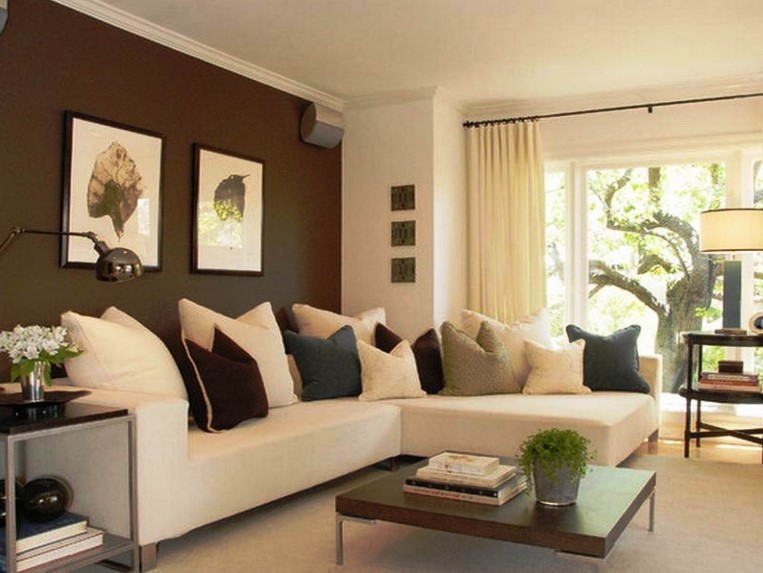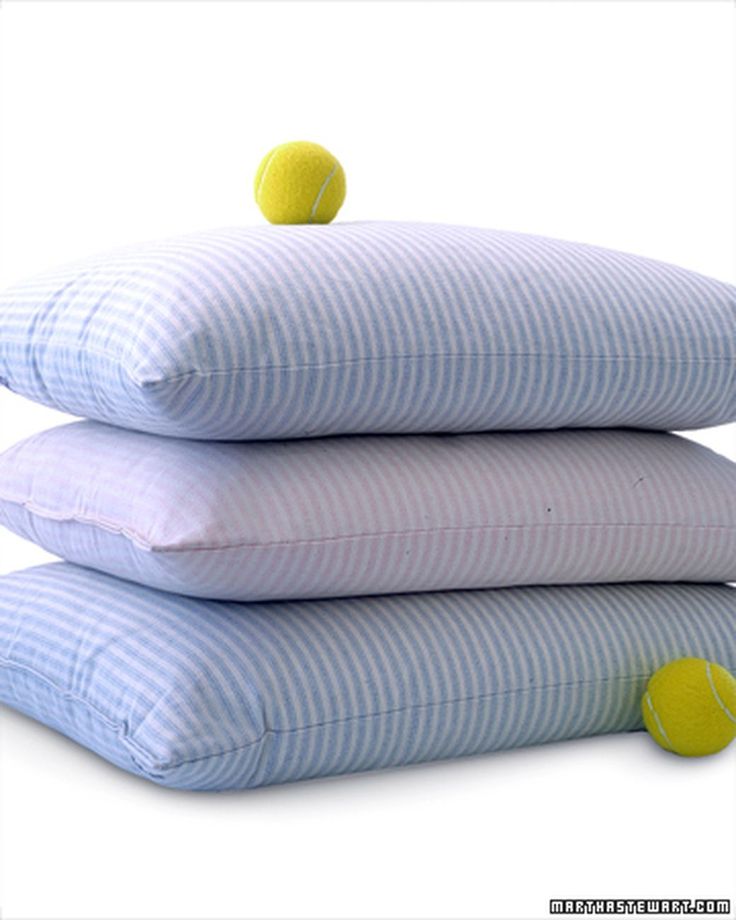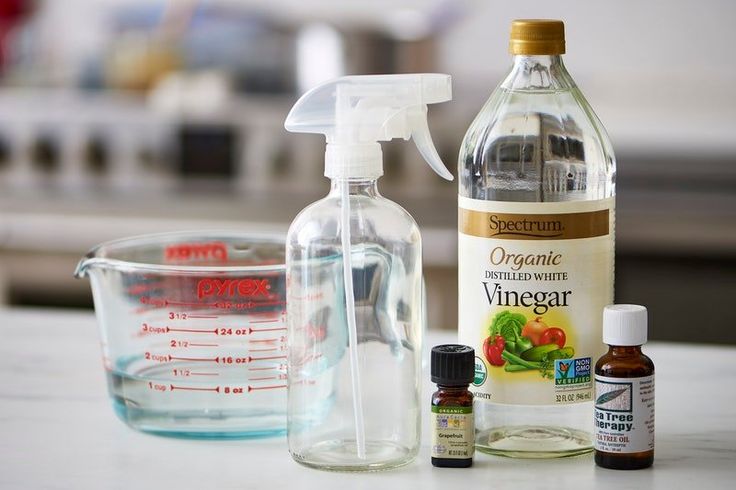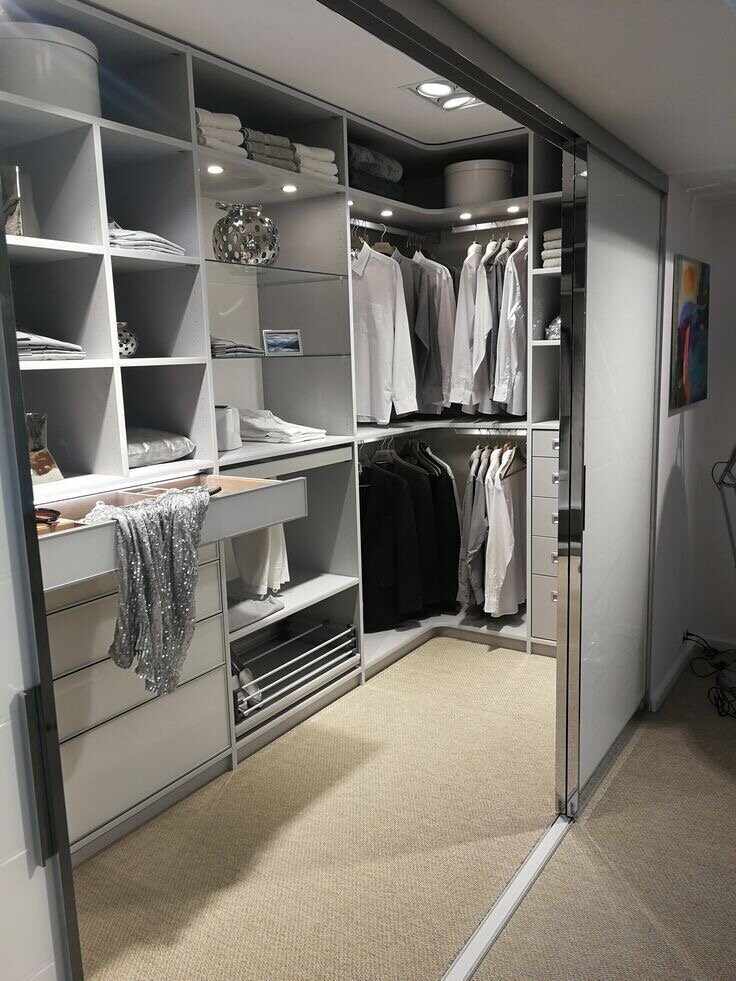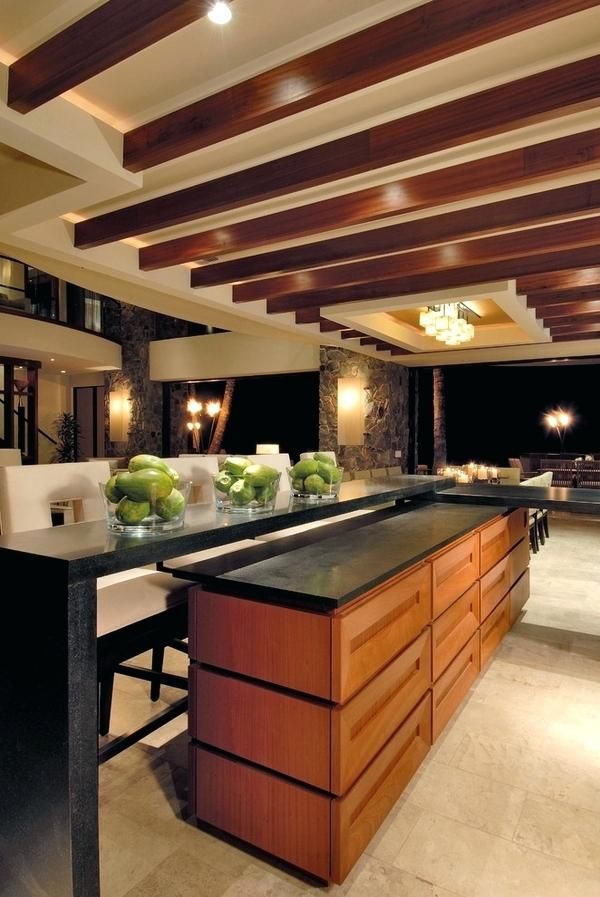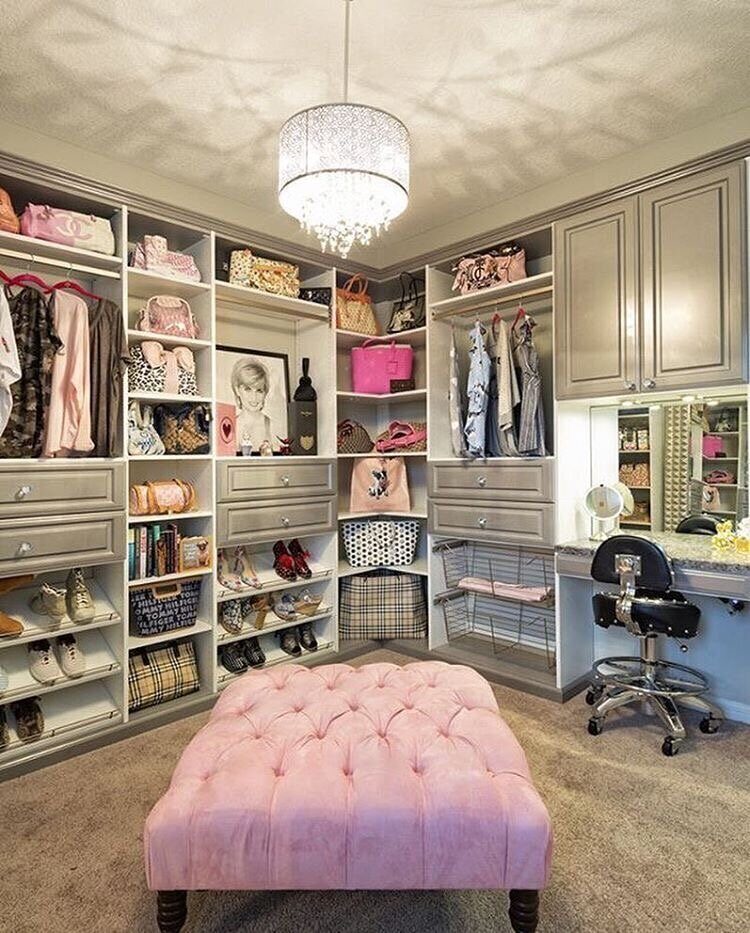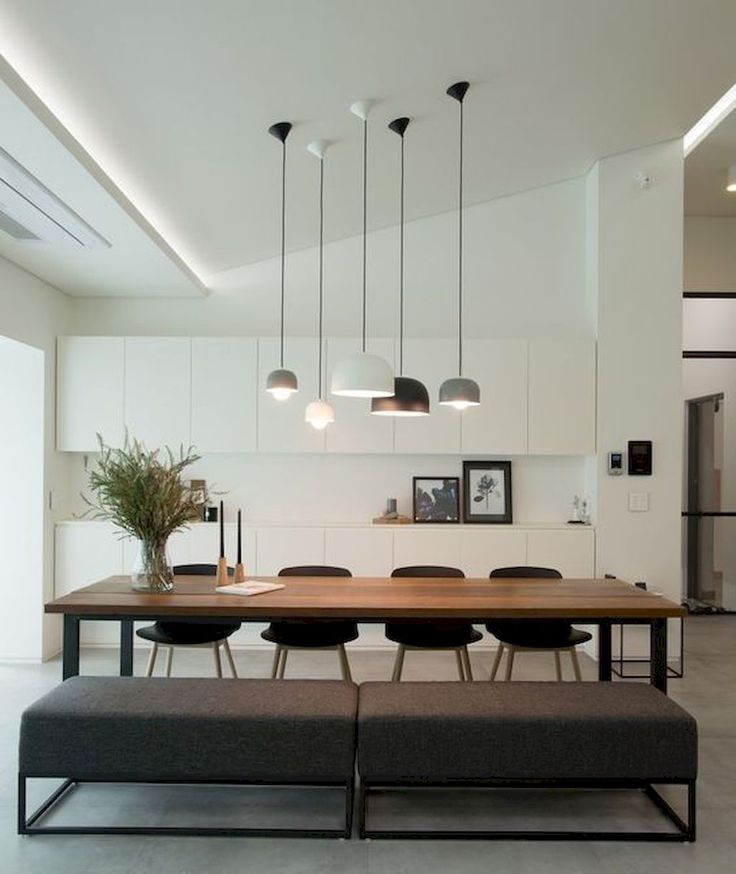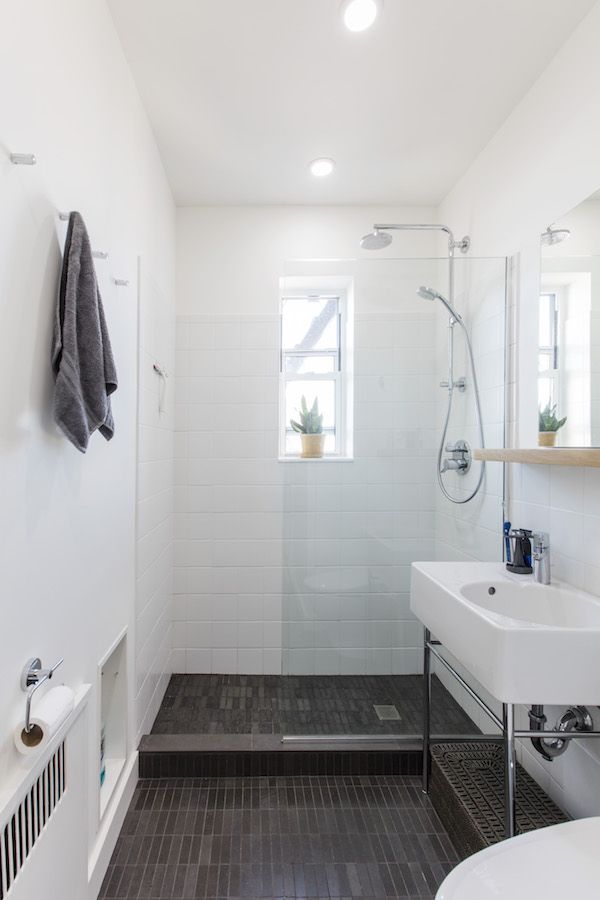Two tone color schemes for living rooms
40 Two-Color Combinations For Your Living Room That Brighten and Enrich
Like Architecture & Interior Design? Follow Us...
- Follow
We spend a lot of time in our living rooms. Some are formal spaces in which to receive guests and host gatherings, others are casual hangouts for the whole family. However you choose to use your main living space, the decor scheme should be both welcoming and engaging. Neutral design schemes have their place, but how about creating something a little more memorable? We’ve put together a collection of 40 two-color combinations for your living room that are sure to brighten and enrich your home. We’ll look at why these hues complement one another and how best to apply them to your interior for maximum impact.
- 1 |
- Visualizer: Eugene Kolomiychenko
- 2 |
- Visualizer: Mỹ Trọng Trần
- 3 |
- Visualizer: One More Buro
- 4 |
- Visualizer: Mai Trang Nguyen
- 5 |
- Designer: Risa Boyer
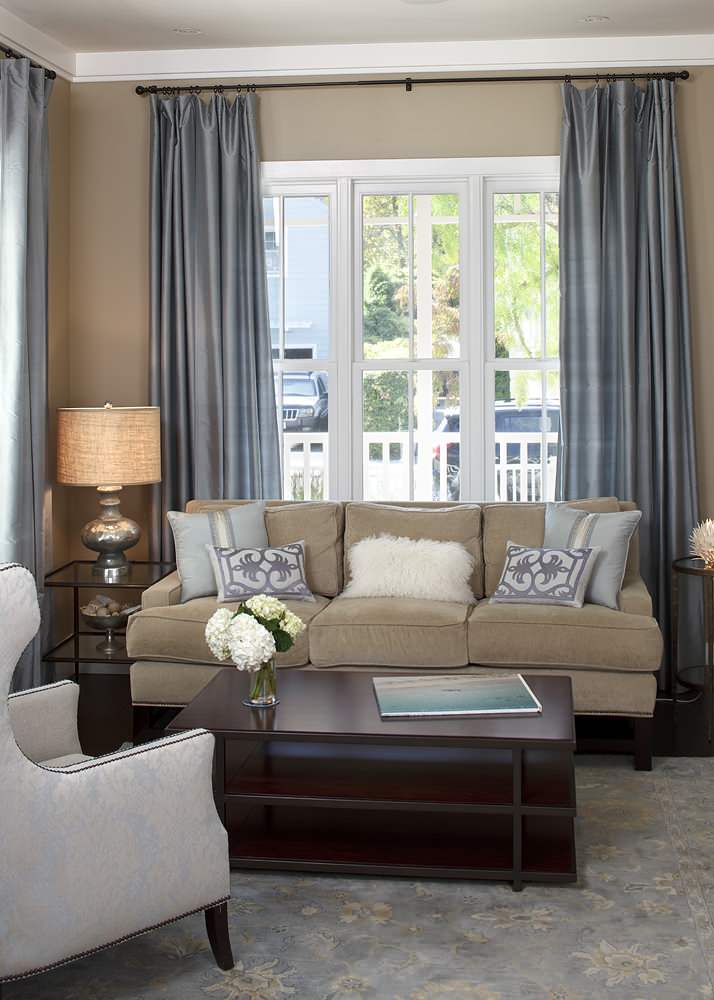 The natural wood tone compliments a tufted brown sofa and an Eames lounge chair.
The natural wood tone compliments a tufted brown sofa and an Eames lounge chair.- 6 |
- Visualizer: PLASTERLINA
- 7 |
- Visualizer: Vóc Nguyễn
- 8 |
- Designer: Holland Harvey
- 9 |
- Visualizer: Peter Tarka
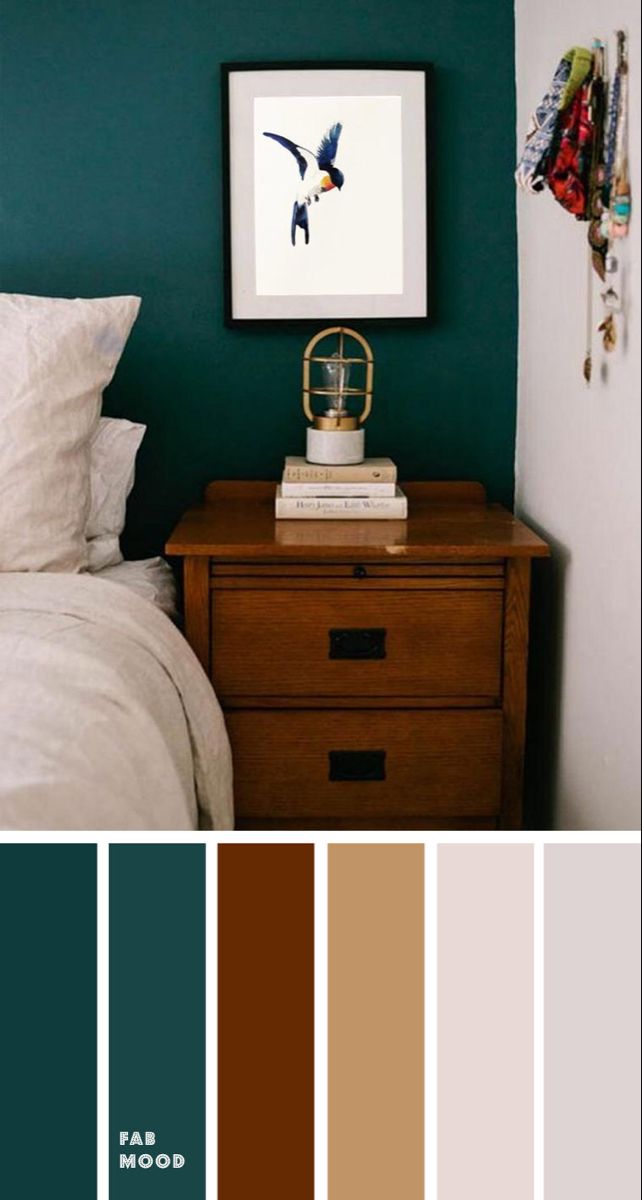
- 10 |
- Designer: Lextav Studio
- Visualizer: Martin Kovacik
- 11 |
- Source: Muuto
- 12 |
- Visualizer: DA Architecture
- 13 |
- Visualizer: Maryna Grechko
- 14 |
- Visualizer: Daria Zinovatnaya
- 15 |
- Visualizer: UDesign
- 16 |
- Designer: atelier SAD
- Visualizer: Tomas Firla
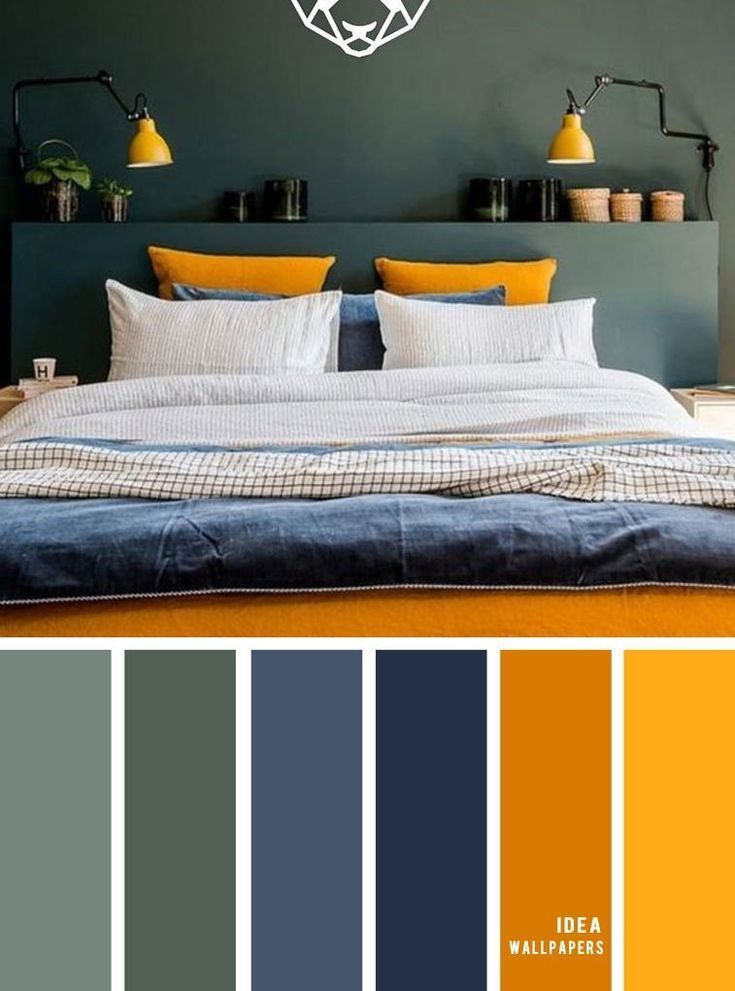 Select just two or three furniture items and accessories in each hue to achieve a color equilibrium.
Select just two or three furniture items and accessories in each hue to achieve a color equilibrium.- 17 |
- Source: Cassina
- 18 |
- Visualizer: Anjey Babych
- 19 |
- Visualizer: Sadolin Dulux
- 20 |
- Designer: Hurma Architects
- Visualizer: Viktor Tarakanov
- 21 |
- Photographer: Philippe Le Berre
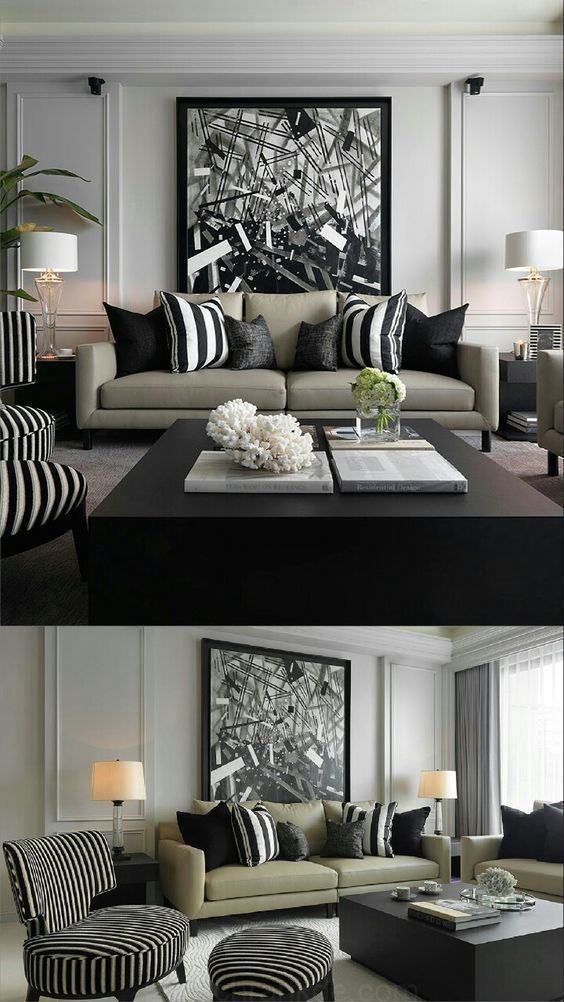 Safely clash your colors by leaving blank white space in between.
Safely clash your colors by leaving blank white space in between.- 22 |
- Visualizer: Weber Studio
- 23 |
- Visualizer: Juliya Butova
- 24 |
- Visualizer: DAR architects
- 25 |
- Visualizer: Serg Ushakov
- 26 |
- Visualizer: Andrey Ryazanov
- 27 |
- Visualizer:
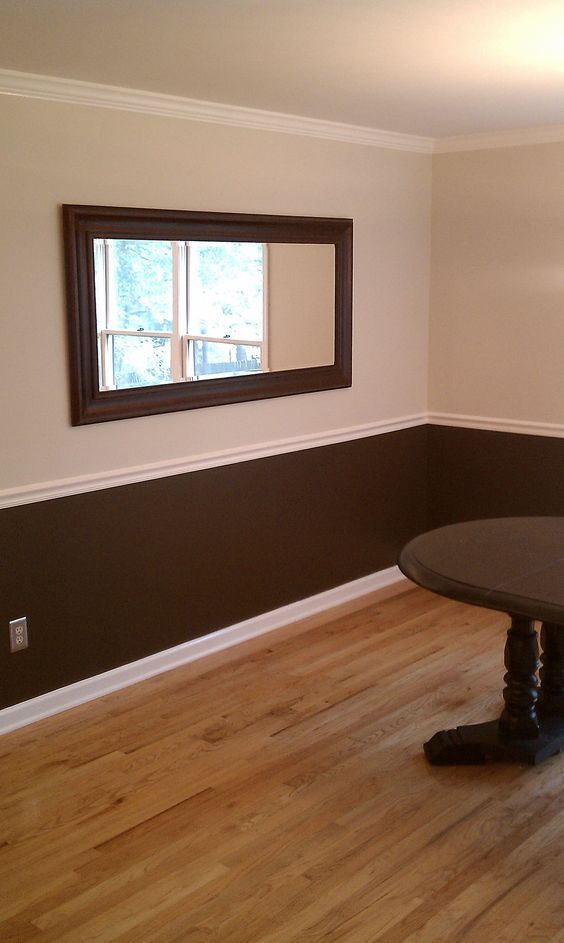
- 28 |
- Visualizer: Studio VAE
- 29 |
- Visualizer: Bui Ni
- 30 |
- Photographer: Scott Basile
- 31 |
- Source: Dulux
- 32 |
- Visualizer: Mirish Mirzayev
- 33 |
- Designer: Lindsey Ellis Beatty and Rachael Burrow
- Photographer: David A. Land
- 34 |
- Visualizer: 土司丨Keson
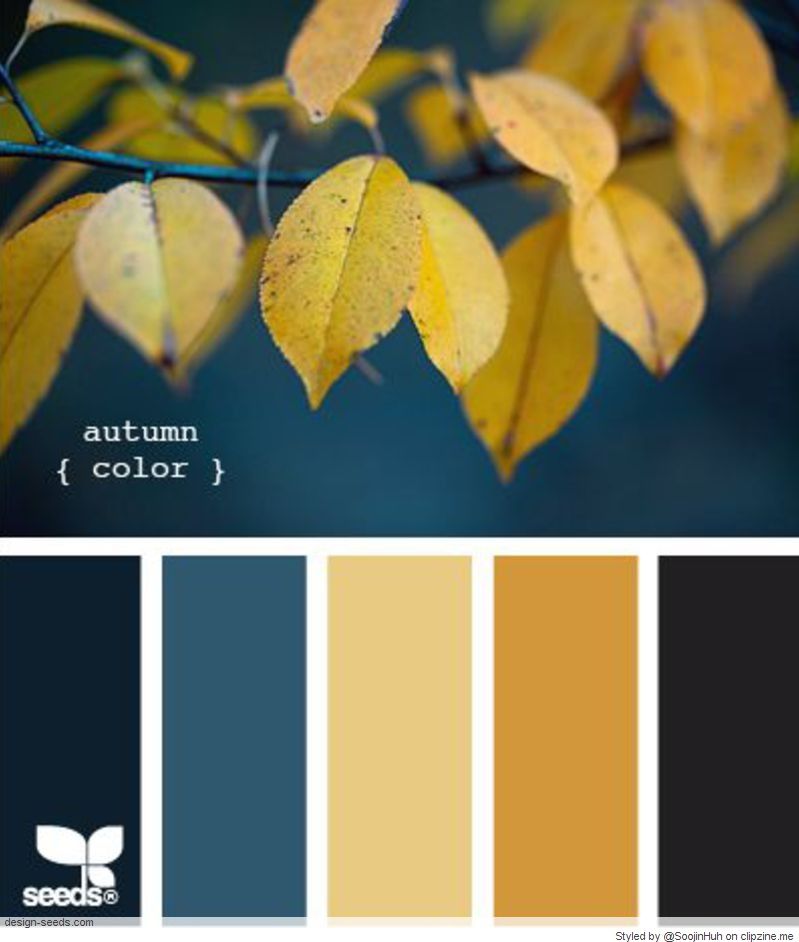
- 35 |
- Visualizer: Maxtree
- 36 |
- Visualizer: Mai Trang Nguyen
- 37 |
- Source: Designer Guild
- 38 |
- Source: Cassina
- 39 |
- Visualizer: AGLAIA Interiors
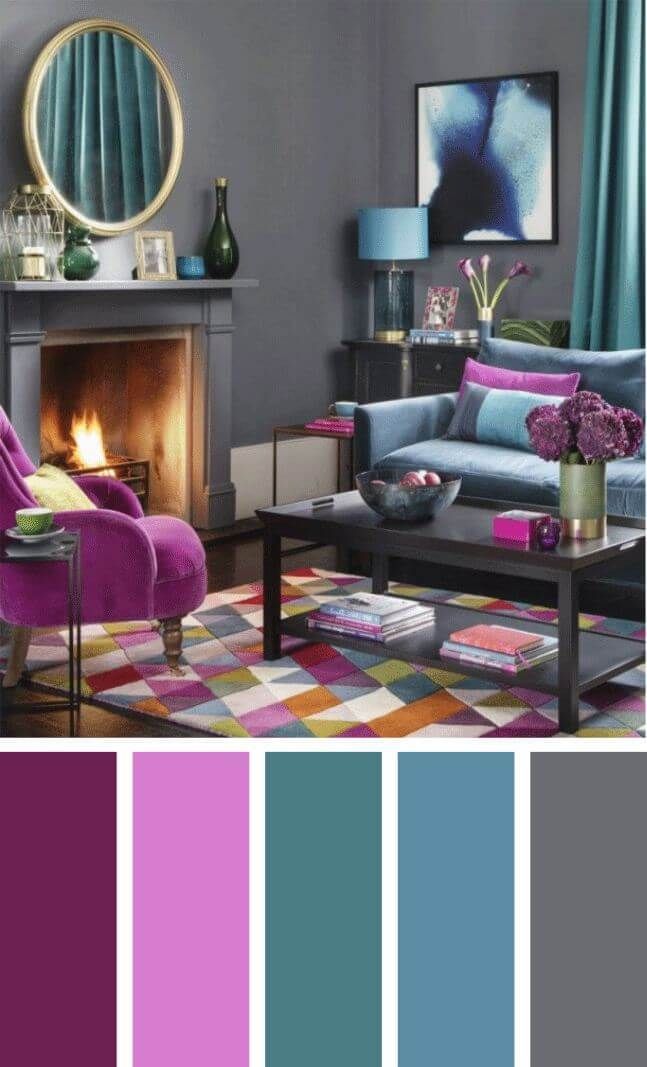
- 40 |
- Visualizer: KYDE Architects
Recommended Reading:
Creating Daring Decor With Contrasting Colour Schemes
51 Living Room Design Ideas That Are Set To Impress
Did you like this article?
Share it on any of the following social media channels below to give us your vote. Your feedback helps us improve.
Make your dream home a reality
Learn how
X
Two color combinations for living rooms
Two color combinations for living rooms can give you a shortcut to a cohesive palette. Choosing a tried-and-trusted (or even slightly experimental) pairing will give you a good base on which to build your scheme.
Of course, you don't have to stay regimented to these two colors strictly when considering living room color ideas, but two dominant shades can be supplemented with smaller pops of other colors for a well-rounded palette.
Whether you have an appetite for classic color combinations, or want to be a little more daring with your color scheme, we've curated some trending two color ideas for living rooms, with expert advice on how to make them work.
10 two color combinations for living rooms, from classic to daring
1. Blue and beige
(Image credit: Dennis Von Nazareth)
Whether your style leans more toward classic country, coastal, or contemporary, blue and beige always works. This combo looks refreshingly crisp and has a lovely Mediterranean feel to it. Using a shade of blue on the walls and ceiling is easier to pull off when you pair it with a crisp beige trim. You can also bring in this palette with blue and white/beige pottery for your blue living room idea.
The two colors wonderfully offset each other without looking too jarring or even contrasting. In this room designed by Dennis Von Nazareth , the walls look light, and restrained and encourage the dwellers to look up, at the intricately detailed ceiling, painted beige.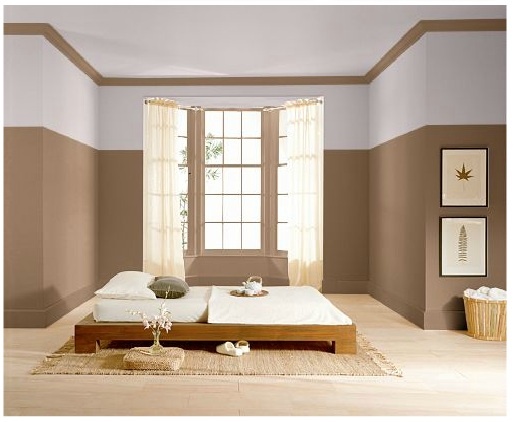 The neutral color does not take away from the architectural details, and in fact, enhances them, and makes them sharper.
The neutral color does not take away from the architectural details, and in fact, enhances them, and makes them sharper.
2. Lavender and yellow
(Image credit: Sawyers Design. Photo by Ansel Olson )
Lately, the world's best interior designers are all picking lavender as the big new color trend in interiors, and looking at this image, we completely understand why. The color is crisp and bright, an looks particularly striking lemon yellow.
In this space, the pairing looks vivid and saves this room from the expected white of so many rooms in this style. Other than the purple shades of lavender, you could also choose lavender with pink or grey undertones for a more earthy look. If you do go with these, a more grounded yellow, perhaps a mustard sofa would work better.
'This home is a very traditional DC, Dupont Circle Row House from the 70s,' says interior designer Kevin Sawyers . 'Of course, it has seen many changes and alterations over the years and we did want to bring it up to date a bit.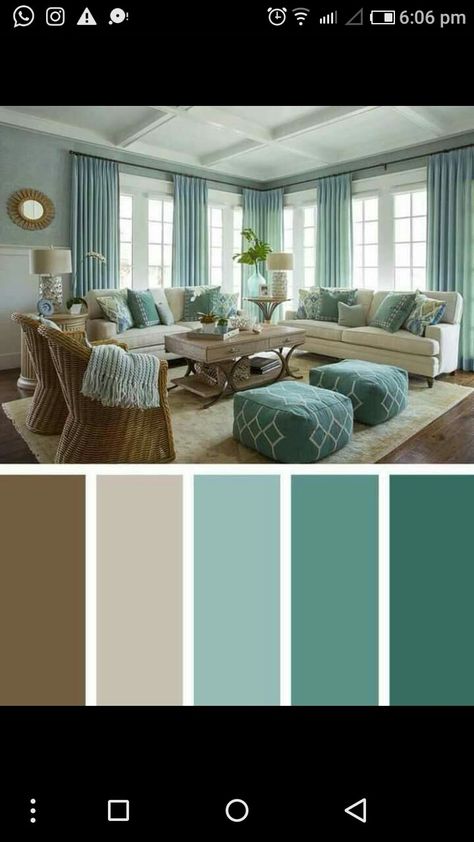 '
'
'I never like to do away with beautiful detailing though we leave as much as possible,' Kevin adds. 'We met the clients in San Francisco and did some major remodeling to their homes there. When they moved, they called us to imbibe the same color into their new home. I felt as though we were bringing a bit of California spirit to the east coast.'
3. Black and white
(Image credit: Kellie Burke Interiors)
Within the interior design cosmos, black and white is a staple. The beauty of this combination is that it balances beautifully with any decorating style, and welcomes a third accent hue with ease.
A black and white living room also offers up the chance to play with different graphics, forms, and textures. Everything looks richer and more enhanced within this monotone world. If you want to embolden your living room's look further, add metallic accents such as gold, bronze, and silver, which will add glitter and look more enhanced against this daring palette.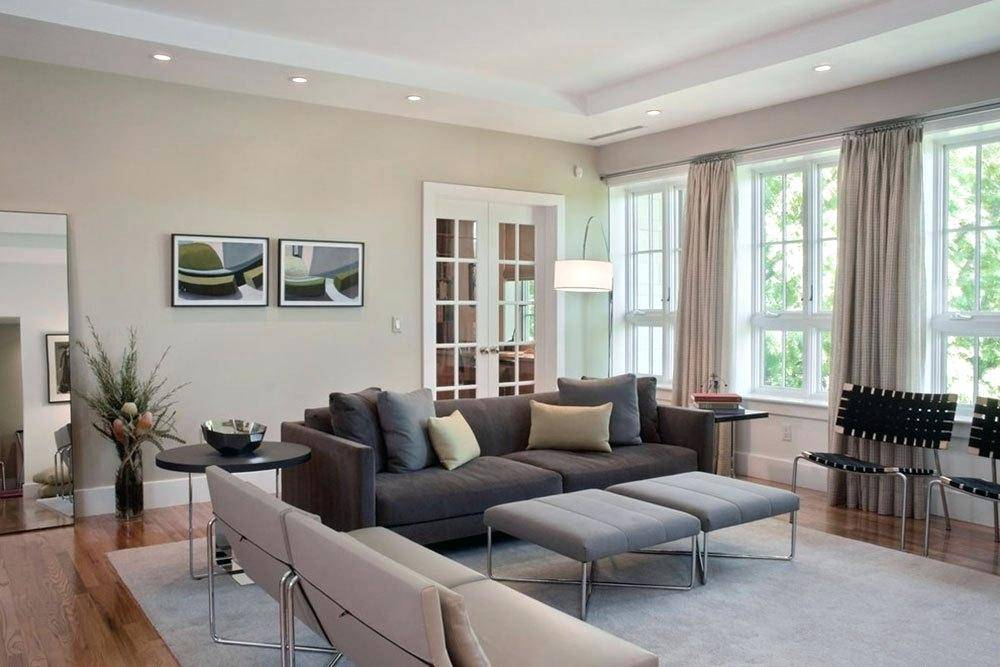
'The living room is a great place to be bold,' says Kellie Burke, founder of Kellie Burke Interiors . 'I love black and white. For traditional spaces, painting the trim in the same wall color gives it a modern update. For a lighter transitional feel, a pale grey with super white trim will set the stage for any decor.'
4. Pink and green
(Image credit: Studio Nato. Photo by Hanna Grankvist)
While a pink living room could be considered a cheery, upbeat space, adding green gives the palette a stronger, more rooted appeal. When done right, the two colors can be effective in creating a new mood in the space. Or you could just use these colors as simple touches in a more neutrally designed room.
'In this project, wainscoting is carried into the den and the bedroom with painted blush pink and milky sea glass green colors using the same combo throughout for continuity, lending a nostalgic pastel backdrop that recalls the architecture of the Mediterranean,' says Nathan Cuttle, founder of Studio Nato .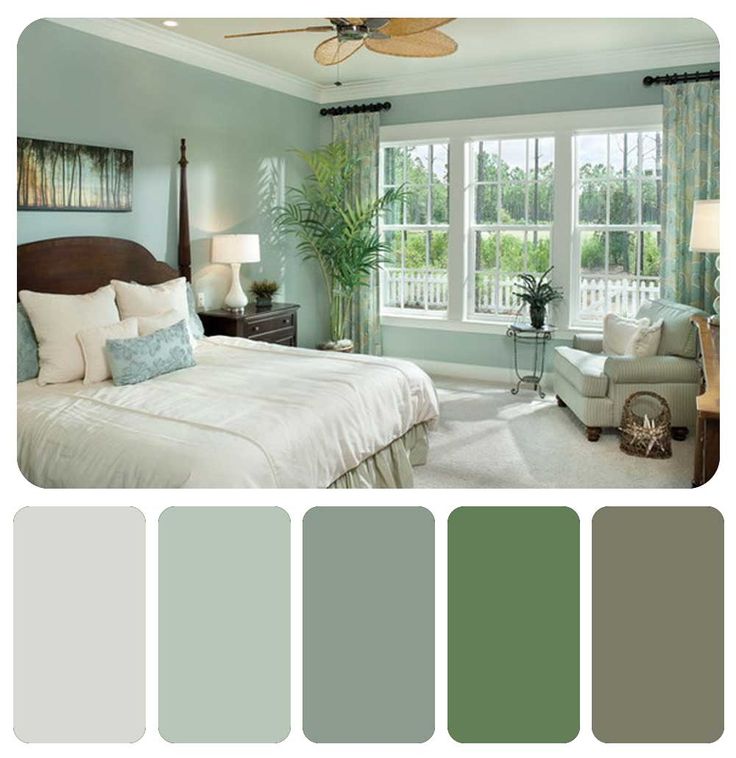
5. Blue and yellow
(Image credit: Natalie Tredgett)
While blues and yellows go hand-in-hand in nature, within interiors, they look nothing short of rich and luminous. Their relationship as near-complements on the color wheel gives them a punchy look.
In a navy living room, an ochre is best placed to pull the scheme together. The beauty of these tones is that they have a way of creating harmony rather than competing.
If you are struggling to bring stronger colors into your home, try introducing them in a small area first, perhaps as a vignette or in an artwork. If you like the effect, you could use it more generously in the room.
'When designing a space I always think about contrasting with complementary hues,' says interior designer, Natalie Tredgett . 'For example in this home in South London, I took the lead from an amazing blue in a cushion, mimicked this on the wall in a soft blue and then contrasted with vibrant yellow in the furniture.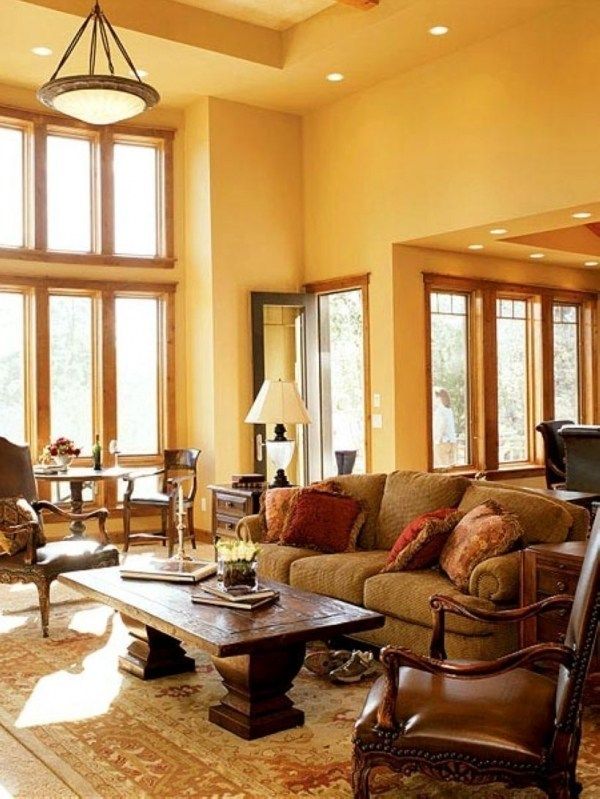 Although to the eye these colours stand out against one another, their tones complement one another within a space and therefore make a great pairing.'
Although to the eye these colours stand out against one another, their tones complement one another within a space and therefore make a great pairing.'
6. Pink and grey
(Image credit: Run for the Hills)
For living room color ideas, think of pink and grey as two sides of a coin – a light and a dark hue. Wonderful partners, they both help hide each other's flaws and bring the best out of each other as well. While the electric pink color prevents the grey from feeling too cavernous, grey on the other hand, stops pink from looking too sugary. For best visuals, choose a pink with a brown or grey undertone.
'The property was blessed with lovely high ceilings so to create a more intimate space for the living room, we broke up the walls by adding a two-tone paint effect using a blush tone and a moodier grey tone, from Paint & Paper Library . We added the contrast to help trick the eye for a cozier space,' says Mimi Pearce, interior designer for Run For The Hills .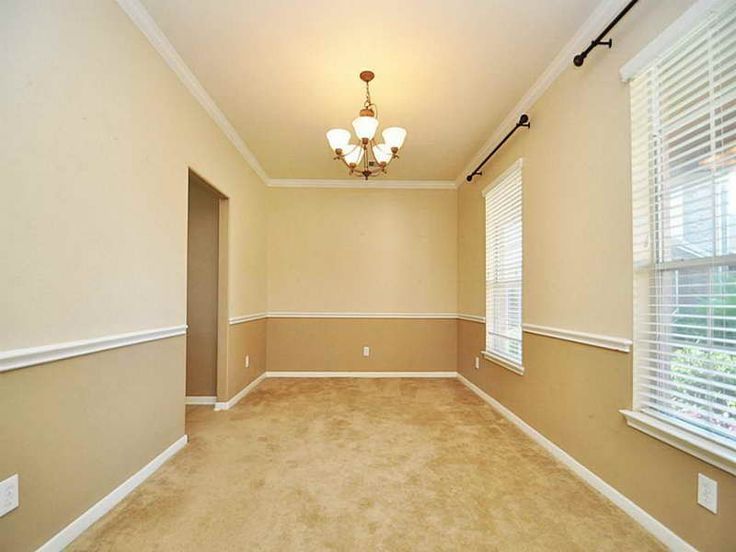
7. Two tones of blue
(Image credit: Vorbild Architecture. Photo Chris Snook)
Soft blues with a touch of green or grey undertones remind us of the sea and sky and tend to bring in a tranquil vibe. On the other hand, the bolder blues such as aqua, turquoise, and cobalt have a fun, youthful vibe to them. All in all, this color is a complete success in interiors.
Within the world of blue tones, there's a whole gamut of colors to experiment with. In that sense then, an elegant living room can benefit from two tones of the same color, which may read as one yet don't look one dimensional. Another wonderful advantage to this hue is that it can take dashes of other bolder colors, and yet look together, cohesive and smart.
'The room benefits from a lot of bespoke joinery units, including shelves inside an old door opening that used to lead to the old kitchen,' says Michael Schienke, director at VORBILD Architecture . 'The woodwork has been painted in a rich, but still vivid, Hague Blue by Farrow & Ball , whereas the wall, is a more grey-blue color from De Nimes by Farrow & Ball .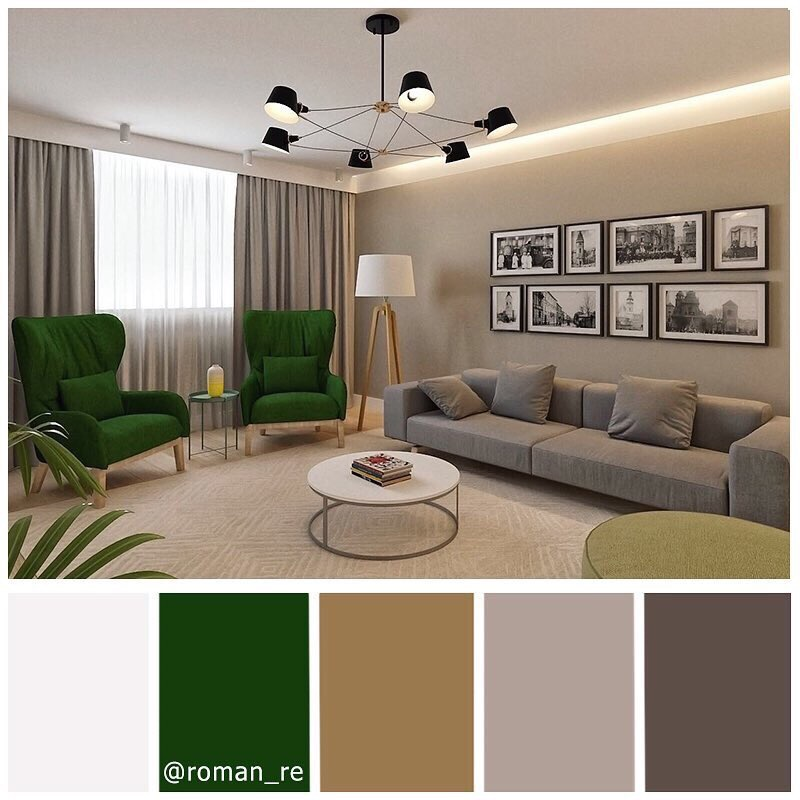 ' The deep-toned blue sofa further enhances the layering.
' The deep-toned blue sofa further enhances the layering.
8. Green and coral
(Image credit: Anne Golliher. Photo by Jason Salem Meye)
Certain colors evoke happy times. These usually connote summery hues such as sunny yellows, watery blues, citrus greens, and punchy corals. These have a joyful, light-hearted vibe.
To conjure up a tropical vibe, and to evoke visuals of exotic flora and fauna (or even a citrus-infused cocktail!), may we suggest green living rooms with lots of coral.
Ideally, in an coral-toned interior, red or purple accents, that sit adjacent to coral on the color wheel work well. Analogous color schemes such as these have a harmonious feel to them. But for eye-catching contrast, choose a green that sits opposite coral and watch the magic. The combination will add life and vitality to the space.
'Not typically used in a formal living room, the coral and teal combination works here because of their shared intensity,' says Anne Golliher, founder of Storied Interiors .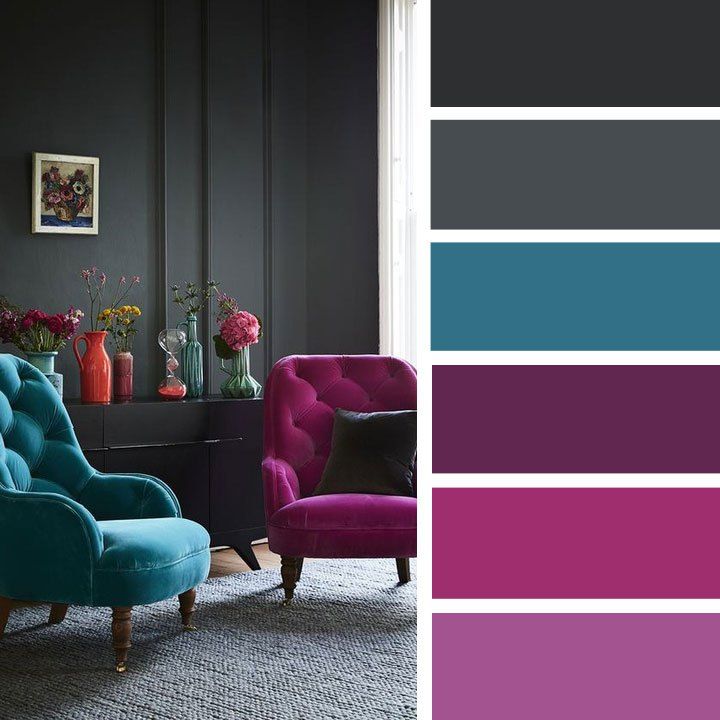 'Paired with bold art and colorful pillows, the combination keeps this traditional room feeling fresh.'
'Paired with bold art and colorful pillows, the combination keeps this traditional room feeling fresh.'
9. Cream and green
(Image credit: Run for the Hills)
Ideally, the tone of green you choose will help determine the mood of a room. A bright apple green when paired with a cream living room can look fresh and spring-like. Dark mossy green with a neutral can seem somber and elegant. Chartreuse is modern and fresh.
Overall, greens are universally positive and create nature-friendly visuals. It isn't a stark or overly dramatic tone but an uplifting one.
'We persuaded our clients to invest in a green sofa which makes a statement, not just a neutral shade but something more punchy and exciting,' says Anna Burles, interior designer at Run For The Hills. 'This deep green sofa is gorgeous and its color allows the art to be monochrome, placed against a neutral wall.'
10. Brown and red
(Image credit: Interior design Chad Doresy. Photo Douglas Friedman)
Everyone loves spring but fall can be a sight to behold, where the world turns a new shade of brown, red, and orange. There’s hardly a prettier sight than the changing of the leaves. Induce this palette in your interiors for an earth-tone living room. This will not only warm up your home but will also give a refined personality to the interiors.
There’s hardly a prettier sight than the changing of the leaves. Induce this palette in your interiors for an earth-tone living room. This will not only warm up your home but will also give a refined personality to the interiors.
Interestingly, both brown and rust/terracotta tones can act as neutrals, allowing more punchy colors to shine bright. Think yellows, pinks, and blues inside a largely brown space. 'I love to use bold tones as a single source of color for a room; it makes the space feel neutral, yet, bold,' says interior designer Chad Dorsey .
'Red can be understated,' says Helen Shaw, Benjamin Moore 's UK Director. 'It can swing warmer towards sun-baked brick and cooler towards crimson-kissed violets, providing a muted quality that brings depth and elegance. Incorporating a rich, bold paint color such as maroon is a fool-proof way to create an instant character in the living room.'
What colors go well together in a living room?
Several colors can pair up to make a striking combination in the living room. Ideally, dark living rooms like black and white are a classic scheme, used for decades to give an elegant touch to spaces. More recently, there has been a newfound love for lavender, paired with neutrals such as white, cream, or beige.
Ideally, dark living rooms like black and white are a classic scheme, used for decades to give an elegant touch to spaces. More recently, there has been a newfound love for lavender, paired with neutrals such as white, cream, or beige.
Blue and green is a classic pairing too, creating a wonderful indoor-outdoor feel in interiors. For a bold look, you could choose tones that sit opposite on the color wheel such as orange and green.
For a more earthy interior, consider a combination of deep red and brown, or moss green and off-white. These tones have a more grounded and timeless feel.
How many colors should you have in a living room?
Although there is no set standard or rule, most interior designers suggest the 60-30-10 technique. This means, that 60% of the main color should be used across the largest surfaces (walls, ceiling, or floor), 30% as accent color (seen on chairs, curtains, or feature walls), and 10% on furnishings or curios. Also, too many colors can look disorienting and haphazard, so three is an optimum number.
photos, popular colors, tips for choosing colors
A living room is a place where you can not only spend your free time and have fun, but also meet guests. It is not surprising that the design of this room requires special attention.
What is the first thing that catches your eye when a person enters the living room? Of course, this is the color of the walls and furniture. The selection of the color palette used in the arrangement of the room is a top priority.
At the same time, the color scheme of the walls of the living room, along with the selection of furniture, are a key factor in the formation of an individual design. Then a natural question arises: how to choose the color in the living room?
Design: Zhenya Zhdanova, DivaDecor.ru
Basic rules for color combinations in the interior
When choosing a particular color for decorating a room, you should start not only from your personal preferences, but also from existing color combination rules. An incorrect combination of even two tones will cause dissonance in the interior and psychological discomfort.
An incorrect combination of even two tones will cause dissonance in the interior and psychological discomfort.
What should be the correct combination of colors in the interior?
-
Using a gamut of shades within a single color. For example, if you combine light yellow, yellow and dark yellow. In this case, the palette should be diluted with a neutral companion, which will help create a smooth transition from one tone to another. It is gray, white, beige.
-
Shades that harmonize with each other. There are universal tones - white, black, gray, beige, which are combined with any others. They can be taken as a basis, diluted with contrasts.
-
Contrasting interior color combination. To understand which of them are well combined, you should use the color wheel - this is a palette of color combinations in the interior. For example, yellow and purple, orange and blue, green and red harmonize with each other. But they should not be used in equal proportions, there should be more of some shade.

-
Use of adjacent tones (analogue triad). On the color wheel, it is green with blue and blue, orange with red and purple.
In addition, you should follow the recommendations regarding interior color design:
-
Do not use more than three or four shades. Choose the main one, the rest will be his companions. The combination of colors in the interior is considered correct if the proportion is observed: 75% - the main tone, 25% - companions, 5% - bright color accents.
-
Neutral shades should be used for the background.
-
A monochrome interior can seem boring. To revive it, it is worth adding bright decor and elements with different textures.
Psychology, meaning and perception of color
Choosing a harmonious combination of colors in the interior, you can remember Luscher's psychological test. It helps to determine what state a person is in based on the choice of palette.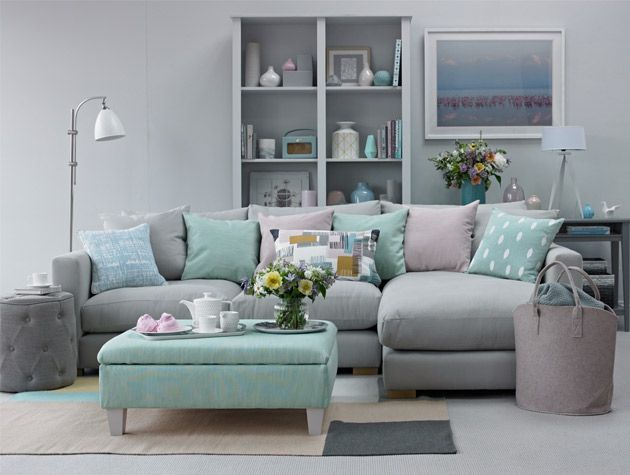 The test does not highlight gray, beige, white or black - they are neutral. But it distinguishes four main shades: red, yellow, green and blue.
The test does not highlight gray, beige, white or black - they are neutral. But it distinguishes four main shades: red, yellow, green and blue.
You can interpret them like this:
-
Yellow is a symbol of joy, happiness, manifestation of new opportunities, self-development. An interesting combination of colors in the interior (photo below): muted yellow, gray and greenery of living plants.
-
Red symbolizes self-respect, confidence, power. Many people cannot get along with this color, considering it aggressive. But you can always add muted shades of red to the design of the room, for example, terracotta, dusty pink.
-
Blue - Luscher self-limitation. From the side of interaction on the psyche, one can say about blue as calming, pacifying, capable of giving a good sleep.
-
Green - trust, optimism, self-confidence. This color in the interior gives peace, relaxation, and reduces fatigue.
Classic color combinations
Some interior color combinations have become classic:
-
Black and white.
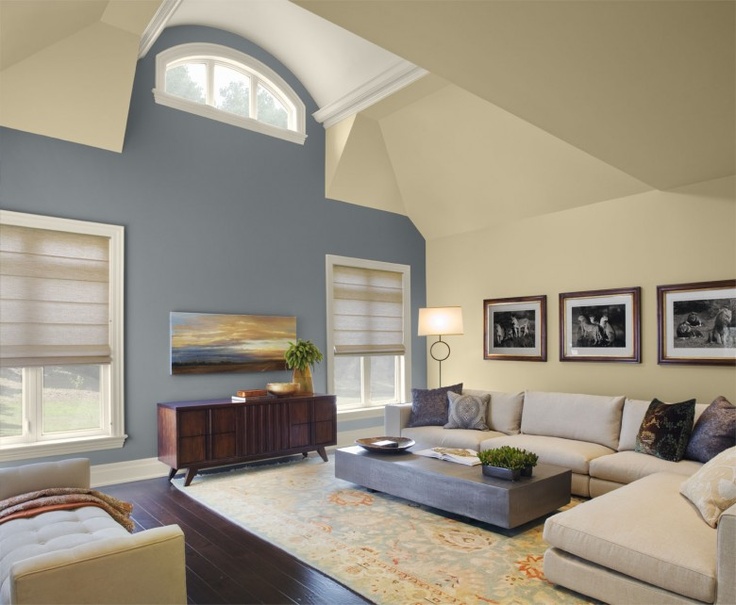 A combination of two universal shades suitable for any style and room.
A combination of two universal shades suitable for any style and room. -
Gray and blue. This combination of colors in the interior gives peace and tranquility. A sophisticated, stylish combination suitable for bedroom, study, library.
-
Beige (brown) with pink. Symbiosis of simplicity and classics. The shade of a dusty rose is especially relevant today.
-
Yellow - ivory. A bright combination, suitable for rooms that need additional lighting. Shades bring a touch of joy, freshness, purity.
-
Red and gold. Bright hues may look too pompous, but muted ones help to create an elegant, expensive interior.
Warm and cold colors in the interior
The combination of colors in the interior of cold and warm colors requires following some rules:
-
Harmony is achieved by choosing the dominant scale - warm or cold, to which accents of the opposite are added.

-
Application of the principle of balancing one tone at the expense of another. So, the result of this principle was a combination of turquoise and beige.
-
The use of mutual reinforcement, when the shades make each other deeper, nobler (for example, emerald and marsala).
-
Uses a muted, desaturated effect. An example of such a technique is a neutral main background with accent bright colors.
By combining a warm palette with a cold one, you can adjust the space. It is known that warm tones visually reduce the space, and cold tones make it deeper, wider.
The use of a gradient in the interior
Gradient (ombre) is a complex technique of combining shades from lighter to darkest. It is used when painting surfaces, combining wallpapers, selecting accessories. When decorating walls with a gradient, they make a transition from bottom to top from dark to light, thereby visually increasing the height of the ceiling.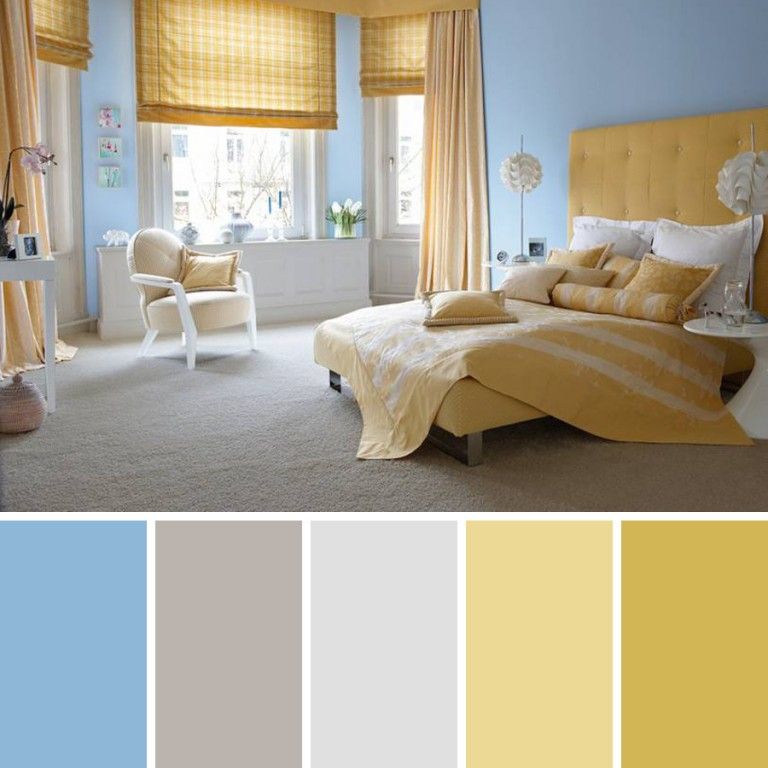
When creating a gradient, it is important to find the right combination of colors in the interior. Then the ombre technique will make the room stylish, and not just colorful. When combining, you can use the color wheel. The most commonly used gradient is blue and gray.
The technique of painting walls with a gradient is often difficult for the layman, so you can simplify your task by using ready-made textiles or ombre-colored decor (curtains, rugs, carpets, photos, floor lamps). Curtains with a gradient look especially advantageous against the background of neutral, plain walls. Small ombre carpets give the effect of volume.
Tables of harmonious color combinations in the interior
When creating a fashionable image of your home, it can be difficult to figure out which colors are best to choose. Therefore, there are ways to simplify this choice. They were created by experts. In addition to the color wheel, they include a tabular form for selecting shades.
To choose the right combination of colors in the interior, the table offers ready-made options. It remains to choose the main shade, then see which complementary companions are suitable. In tables built on this principle, several tones (five or six) are presented. The first of them is the main one, the next two are complementary to it, and the fourth and subsequent ones are contrasting. With the help of such a palette, you can choose all the necessary shades for decorating a room.
Other tables may work differently. For example, by choosing a shade you like, you can see the degree of its compatibility with another. If it is low, you should look for other options. More opportunities are provided by tables that present a shade and a number of tones combined with it: a similar range, similar shades of other colors, or in contrast.
Popular colors for living room walls
Living room colors can be varied. The entire palette of existing shades is divided into warm and cold tones, which should not be mixed with each other. What colors can be taken as a basis in any living room?
What colors can be taken as a basis in any living room?
White
Undoubted favorite of the classic style, versatile and perfect for creating a cozy room. Light colors create the effect of expanded space, visually increasing the volume of the living room. White color is easily combined with any other shade, black and white is especially welcome - a classic that will never go out of style.
Recommendations from Nadezhda Kuzina
The only rule of a "white" living room is to use bright and contrasting elements, because an exclusively white interior will create an impression of incompleteness. Among such elements may be furniture, paintings or patterns on the walls, curtains.
In general, the white shade of the walls can be compared to a canvas: further drawing will depend on your imagination.
Beige
Another win-win option that is very difficult to spoil the design of the living room.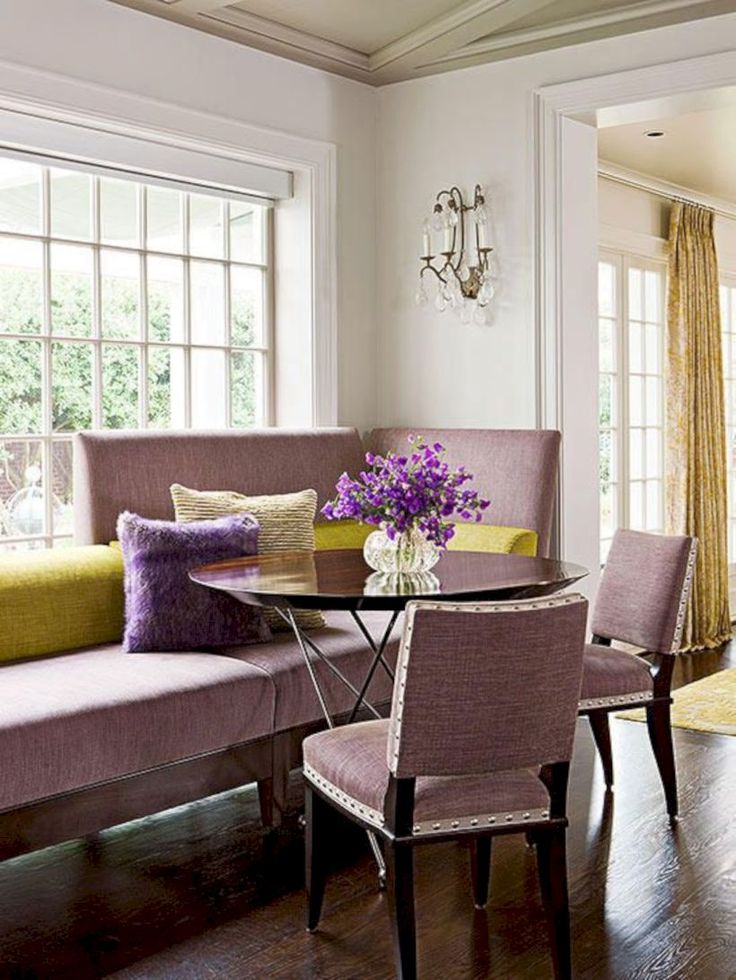 This color scheme makes the room bright and spacious, does not tire, combines well with other shades.
This color scheme makes the room bright and spacious, does not tire, combines well with other shades.
Beige-coloured walls go well with natural wood furniture. This approach to the design of the room will not leave your guests indifferent.
Design: Svetlana Startseva
Brown
There are a huge number of shades of brown, and all of them will add practicality and richness to your living room. Brown walls are suitable for those rooms that are well lit.
Just don't overdo it with brown, because too much brown will make the living room look smaller. And one more tip: first paint the walls brown, and then pick up furniture and other sets of a different shade so that the elements of the room do not merge with each other.
Gray
Another versatile option for decorating the living room walls. Against a gray background, any bright paraphernalia looks good, be it a headset or paintings. A good option would be to dilute the monotonous gray shade with patterns or stripes.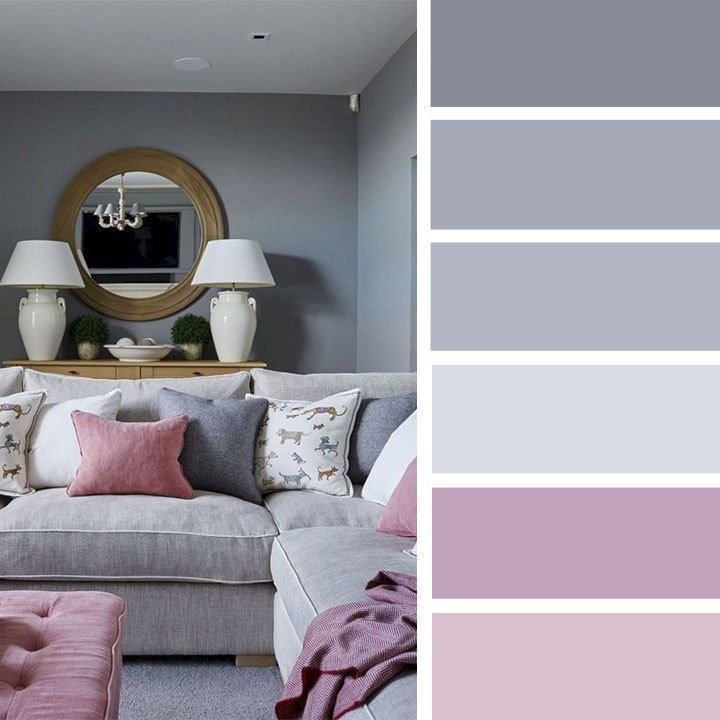
Design: Yana Molodykh
Green
Among the many shades of green, there are both bright and dark options for decorating a living room. The presence of green color will give the room a sense of calm, which is so lacking after a hard day's work.
Green colors look original and attractive, but matching them with other design elements will not be so easy. Shades of green may not be combined with all furniture or floor options, which makes it somewhat difficult to design a living room.
At the same time, a competent combination of all factors makes a room in green tones cozy, beautiful and mysterious. Natural colors are always pleasing to the human eye, which your guests will definitely appreciate.
Design: Stepan Bugaev
Yellow
A truly vibrant color scheme for the living room. The use of yellow shades will be a saving solution for rooms with insufficient natural light.
Bright yellow must be diluted with other, calmer tones (white, gray, beige).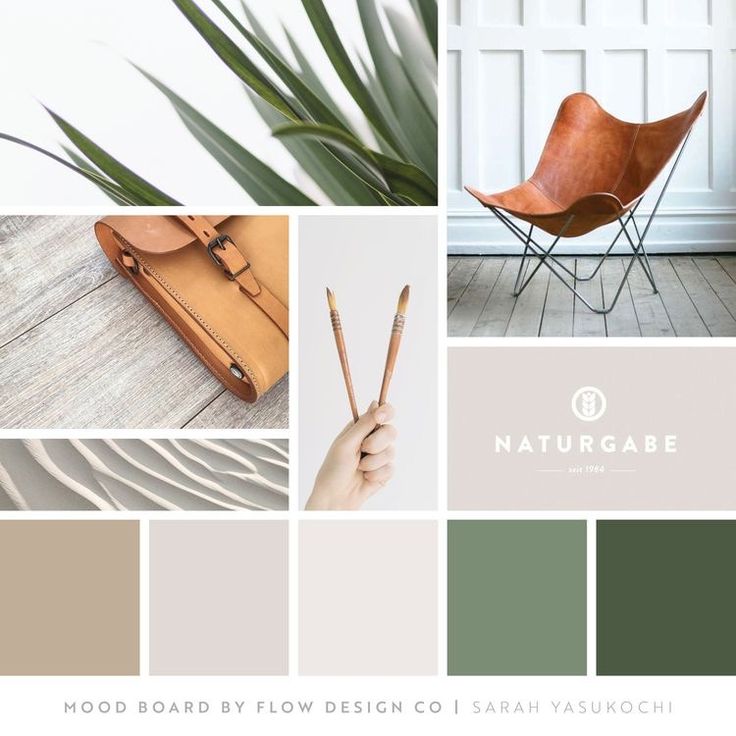 A successful combination will make the living room so cheerful and cheerful that you won’t want to leave it.
A successful combination will make the living room so cheerful and cheerful that you won’t want to leave it.
Design: Irina Sobylenskaya
Blue and light blue
Blue and light blue are suitable for small rooms. These shades are well combined with white, gray, yellow, lilac, brown. Do you want to make your living room a place of peace and tranquility? Then blue tones will be a good solution when choosing a color scheme.
When using blue or light blue, it is important to know the measure and be able to combine with the material of the headset and other elements of the living room. With a successful selection, the room will look elegant and unusual.
Design: Nikolay Nikitin
Red
The use of red color with proper execution of the design leads to good results. An excess of this shade gives the room excessive saturation and contrast, which greatly hurts the eyes, and guests can plunge into a slight shock.
Would you like to use shades of red? Dilute them with furniture and white curtains.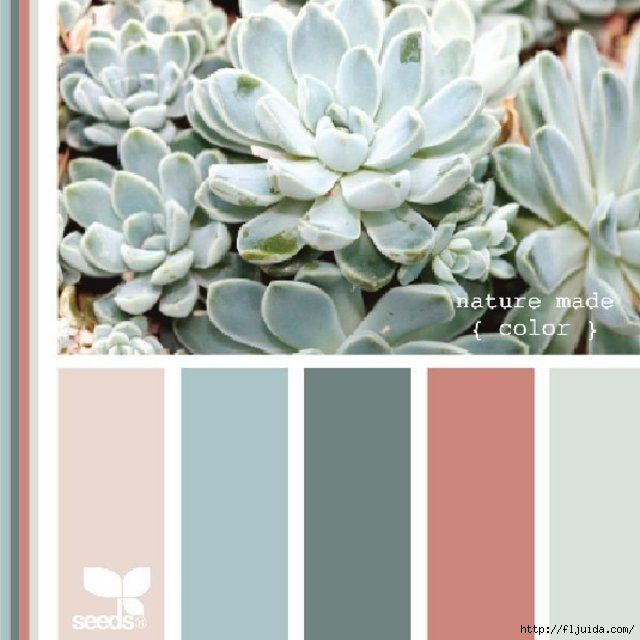 This will reduce the “danger” of red in the room and save the eye from overstrain.
This will reduce the “danger” of red in the room and save the eye from overstrain.
Orange
This is where you can talk about the character of a person if he uses orange to decorate the living room. Walls painted in this color will obviously speak of the positive mood of the owner and give the guests a charge of good mood.
Too much orange is the same mistake as in the case of red. Because orange color is very popular with designers, they advise to dilute it with white, gray, beige or black.
Purple and lilac
Purple is a symbol of wealth. The decision to paint the walls of the living room in such shades speaks of the owner's creative and extraordinary thinking. Rich style and unusual design - that's what you can get when choosing lilac and purple colors for decorating the living room.
Black
Here you can once again talk about the classic combination "white + black", the choice of which will bring almost 100% effect on you and your guests.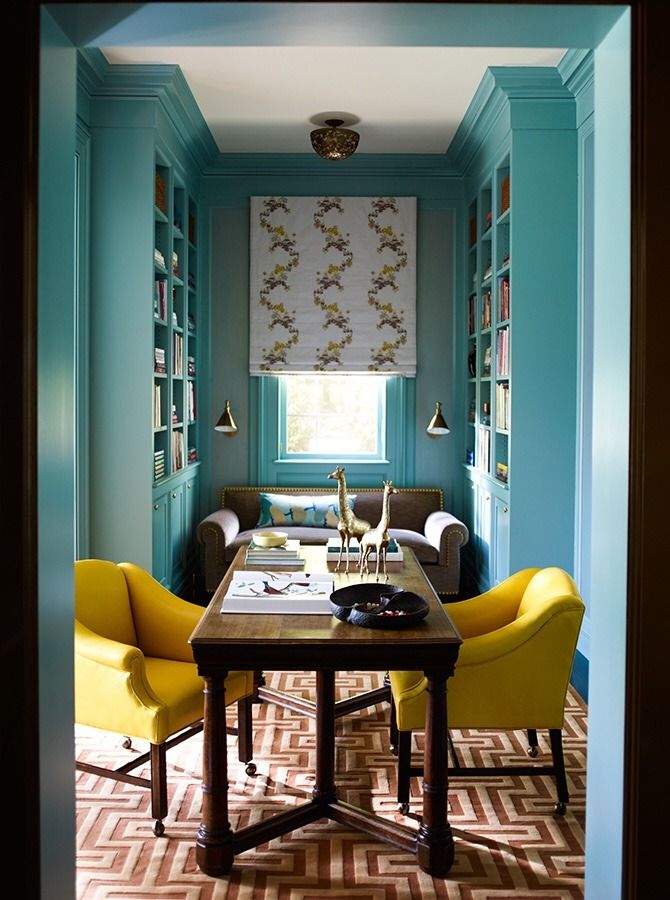 However, the use of black for wall decoration is a rather controversial point, although acceptable in the modern world of design.
However, the use of black for wall decoration is a rather controversial point, although acceptable in the modern world of design.
It is believed that black shades can bring sadness and melancholy to those who are in the room. However, now there are many projects where black tones fit perfectly into the overall picture of the living room. The main feature is the use of additional matte, metallic and chrome shades of the color palette in the room set.
Design: Kameleono studio, Pavel Lichik and Anastasia Ivanova
Living room zoning with color
Zoning will be an excellent addition to the overall design of the living room. In particular, the room should have its own seating area, where guests can sit on the sofa and spend their free time having pleasant conversations. How can space be divided?
- An excellent solution would be to paint one of the walls in a bright and saturated color. This contrast is especially visible in the room, the main shades of which will be beige, gray, white and other light colors.
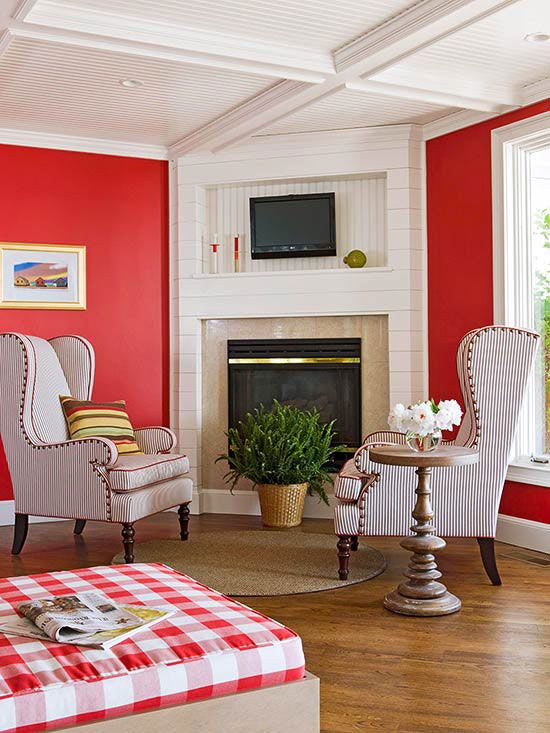 The brightness of the object will visually divide the room into several zones;
The brightness of the object will visually divide the room into several zones;
- If you have a dark room in which the walls and other attributes are designed in brown, dark green, blue shades, you can highlight the place for leisure by installing floor lamps, lamps and lamps;
- If you dilute plainly painted walls with a few paintings or photographs, you will also be able to highlight a corner in the living room.
Choosing the color of the living room according to the cardinal direction
As the wind rose is taken into account when building a city, one should not forget about the direction in which the living room windows face. The choice of the color of the walls and its maximum manifestation may depend on this.
- If the windows are facing north, it would be a great option to use warm and bright colors when decorating the room. Here you can use red, yellow, orange, green, etc.;
- In cases where the windows are open towards the South, the situation is opposite.
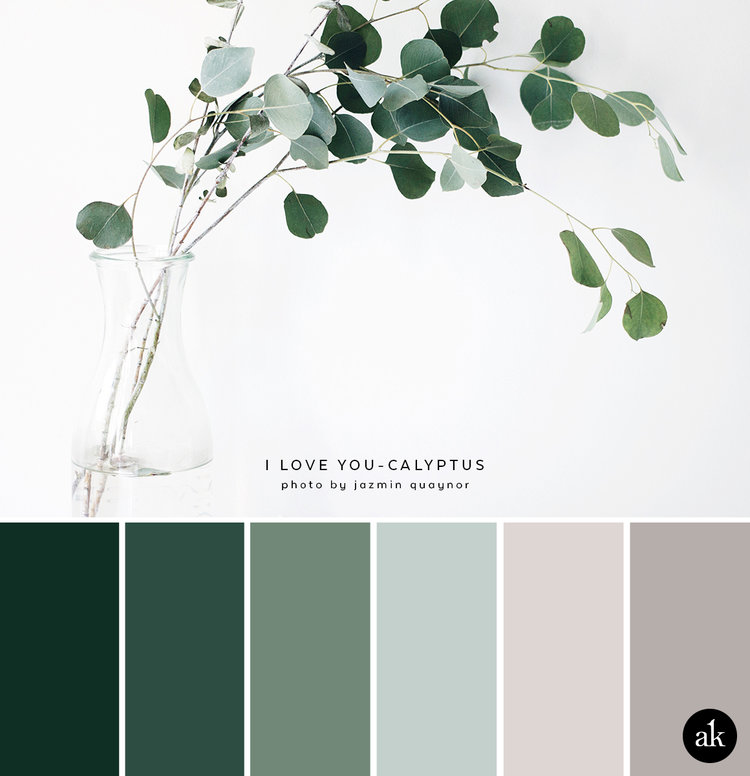 Cold and calm shades like blue, purple, beige organically fit in here;
Cold and calm shades like blue, purple, beige organically fit in here; - Are the windows facing East? This means that the room will be well lit. The use of neutral, soft colors will be the perfect solution for such a living room. Among these shades, white, gray, beige, lilac can be distinguished;
- Windows facing West. Everything here is just the opposite: The lack of light should be compensated for with bright and saturated colors like red, yellow and orange. Also, the choice of calm tones (beige, lilac, purple, blue) will not be a mistake.
Design: Yuliya Piskareva
Decorating a living room is an important step in decorating any home, so the choice of wall color should be taken seriously.
Our advice: choose the colors you like best and then see how to do it. So it will turn out to create a compromise option and satisfy not only your wishes, but also create a successful version of the interior of the living room as a whole.
Design: Vasilyeva Natalia
Design: Anna Muravina
Design: Nikolay Nikitin
Design: Olga Rozina, Natalia Preobrazhenskaya and Uyutnaya kvartira studio
Design: Uyutnaya kvartira studio
Design: ToTaste Studio
Design: Marina Kutuzova
Design: Victoria Smirnova
Design: Alexander Babajanyan
Design: Irina Krasheninnikova
Design: Elena Filimonova
Design: Elena Chabrova and Olga Chebysheva
Design: Irina Sobylenskaya
200 best photo ideas [Design 2019]
The living room is the room where people are most often in the daytime, because it is here that they spend time with friends, guests or relatives.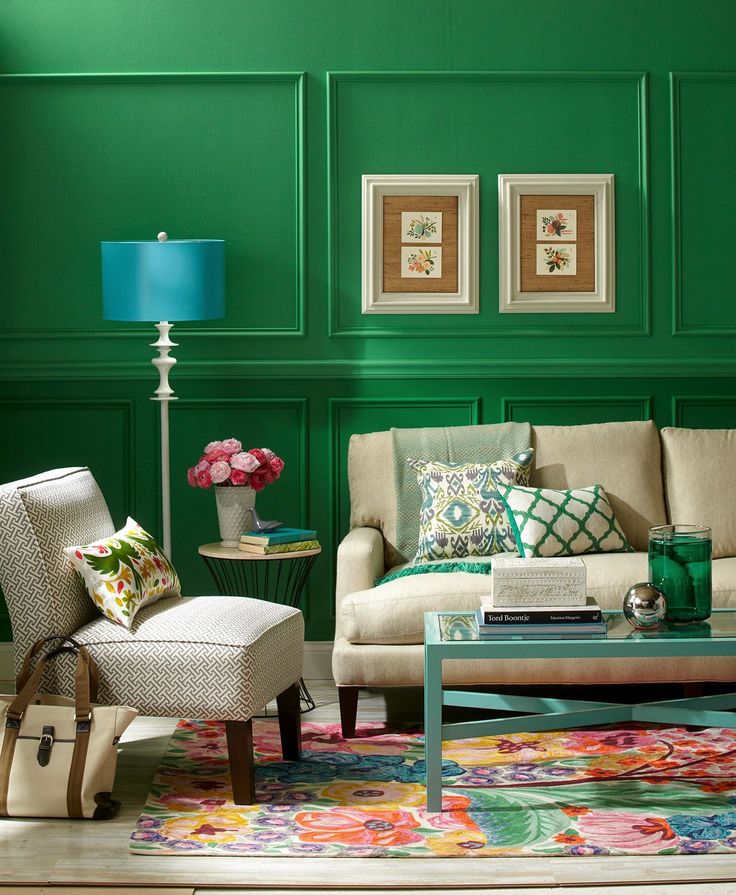 The main task of the owner is to create a warm and cozy atmosphere, which can be realized using a combination of wallpaper in two colors.
The main task of the owner is to create a warm and cozy atmosphere, which can be realized using a combination of wallpaper in two colors.
The combination of wallpaper in the design of the room can not only emphasize the furniture, but also place the right accents that will attract attention. With the help of two colors, you can zone the space, divide it into functional zones.
Combination rules
It should be noted that when creating a stylish and practical interior of a hall or living room, you need to choose the right colors for combination, and preliminary preparation is also necessary.
Basic combination rules that must be taken into account without fail:
- Decorative elements must be combined with the main color.
- You need to define the invoice type.
- It is necessary to choose a drawing, a pattern and an ornament that will decorate the wallpaper.
- You will have to think about the right combination of wallpaper and their colors with decor in the interior and furniture.
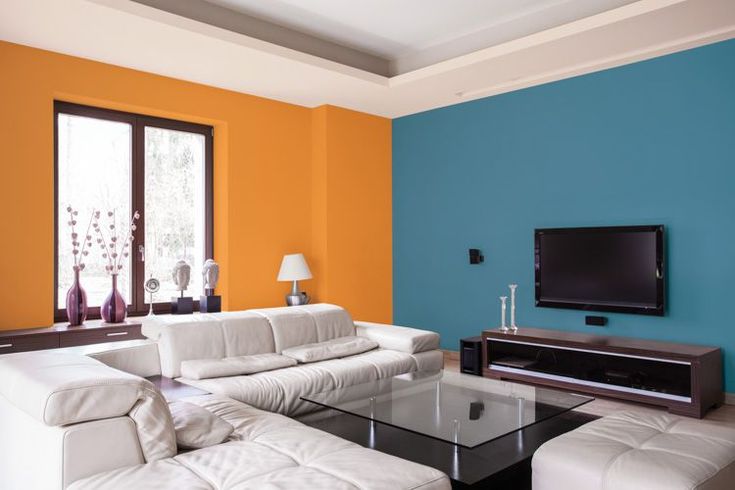 Curtains should be in the same tone as the wallpaper.
Curtains should be in the same tone as the wallpaper.
As soon as a clear picture of the future interior has been drawn up, you can start combining wallpapers. Now designers offer several ways and techniques for creating combinations of two colors. It is best to initially think over the entire interior in all its details. The more carefully the design is thought out, the more successful the final result will be. It is better to combine wallpapers after buying furniture and basic interior elements, since wallpapers should not only harmoniously combine with each other, but also emphasize the overall style of the room.
The most original option will be the right combination of contrasting colors of different textures and textures. You also need to focus on the compatibility of the color palette so that the interior is perceived organically and “does not hurt” the eyes. If you choose the right color palette, then you can successfully zone the room, the presence of reliefs that can be used will be a positive point.
Selecting wallpaper in two colors is not always easy, but many manufacturers offer special catalogs of their products, where there are selections of "wallpaper-neighbors". You can rely on the proposed options or come up with something of your own, thus expressing your individuality, emphasizing the taste and uniqueness of the owner, the originality of his thinking. You can also find photos of ready-made options, choose the best one. If the room is small, then you need to take this into account, use colors that can visually increase the dimensions of the room, raise the ceilings or "push" the walls. For this effect, it is better to use light colors and small drawings, because thanks to them there will be more space and light, which means that the room will seem more spacious.
Dark tones will make the room look smaller and are best used in spacious halls or living rooms. It is also a good idea to use an accent wall, so 3 walls will be in light colors, and the last one will take on dark colors in order to diversify the interior in this way.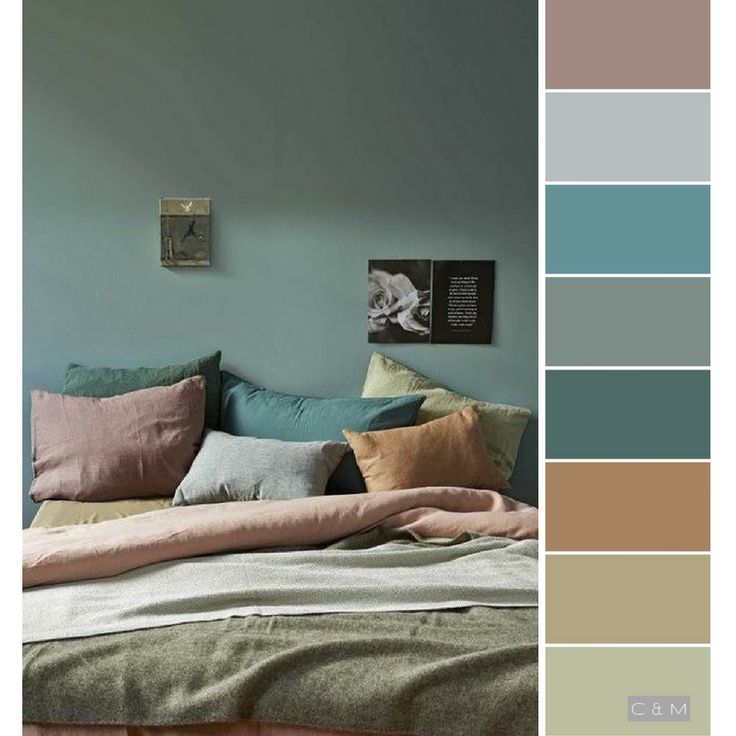
Combination options
By pasting method
Wallpaper can be glued in different ways, which one the owner decides to choose, it can be both horizontal and vertical, abstract or zigzag. In this case, it is important that the end result suits the homeowner, and the harmony of the design is holistic.
Classic:
- Vertical or horizontal combinations.
- Create an accent wall with a brighter, more contrasting color or pattern.
- Wallpaper inserts that have a decorative role.
As shown
Depending on the drawing, the same room can look completely different. For example, for polka dots, abstraction or floral prints, it is better to use stripes, which can emphasize the appearance of the wallpaper, their originality. Striped wallpapers are best combined with ordinary plain canvases, which are close in color. It is important not to oversaturate the interior of the room, to have a sense of taste and moderation, because you need to combine patterns correctly: if a combination of two completely different ornaments is used, then the effect is unlikely to be successful.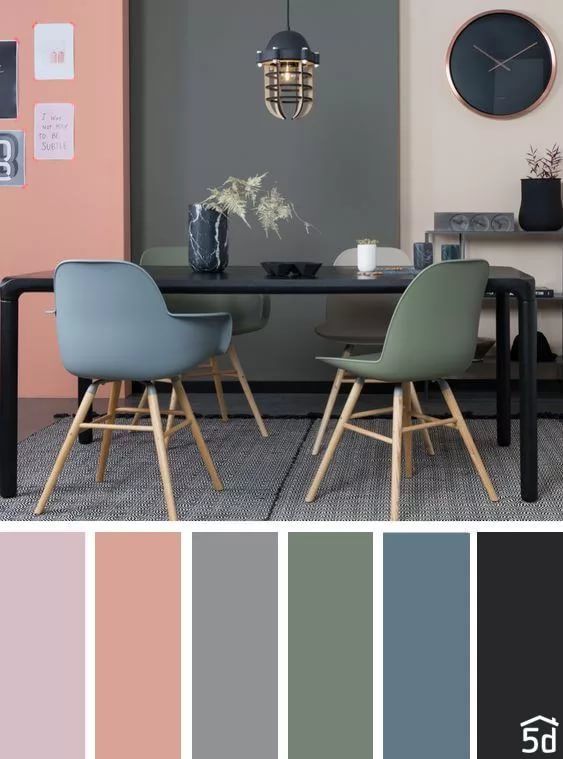
By color
Initially, you need to choose one favorite color that will be used in interior design. After that, you need to find a successful “pair” for him, which will complement or set off the main color and blend harmoniously. The combination must be carefully considered, after which it will be convinced that this particular option is optimal.
Color combinations:
- Using two shades of the same color (eg beige and brown, pink and red, sky blue and blue). Such duets will create a luxurious and warm atmosphere, make home comfort as pleasant as possible for perception.
- The use of two pastel colors of a different palette.
- A pair of complementary colors. These colors should be opposite each other on the color wheel. A successful combination will be the use of blue and orange, yellow and purple or red and green. However, it is worth noting that this option is not very popular, since such bright colors create a strong strain on the eyes and not everyone can stand it.
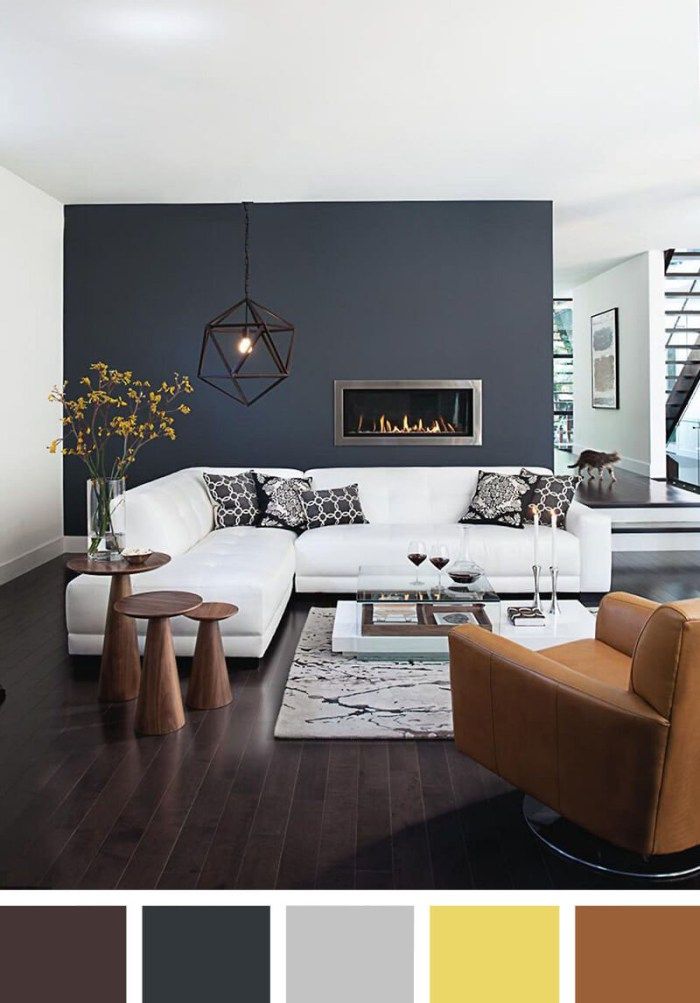
Patchwork
Creating an interior using patchwork technique is not only possible, but also necessary, because it is stylish and modern. The gluing technique can be different: chaotic, classic, chess. Fragments can also be of any shape: abstract, triangular, square.
With such wall decoration, it is important to focus on the advice of designers, for example, using the classic method, you can apply arbitrary patterns, colors and patterns, but with unusual types of combination, you can use a maximum of 3 types of patterns, it is best that they are similar to each other.
Highlighting niches and ledges
Many living rooms are faced with the problem of having ledges or niches, which is considered a disadvantage when planning a home. It is difficult, and sometimes even impossible, to hide such flaws, but they can be emphasized and made into virtues.
It is best to cover a niche with wallpaper that is a few tones darker, so it will be visually deepened, which will attract attention and be interesting in appearance.